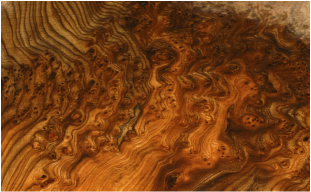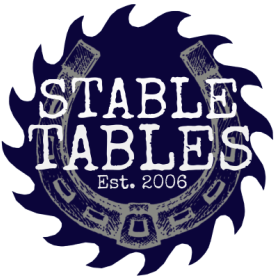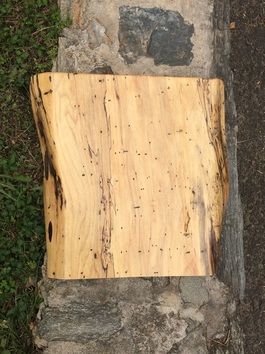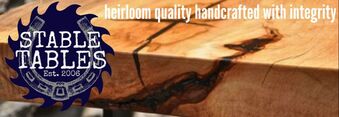 Wood with figure.
Wood with figure. Here at Stable Tables, we pride ourselves on our ability to produce table designs that our clients love. We thoughtfully design dining room, coffee, cocktail, console and side tables based on your custom needs. We strive to do our best in order to create and to build you the table of your dreams. But, we cannot create beautiful tables without beautiful wood.
One option for our clients is to order a table with wood that has “figuring”. Think of figure as grain with spunk. Wood figure can result in a myriad of stunning patterns that can resemble tiger stripes, ripples and swirls, just to name a few. Wood figure can appear curly or tiger striped when grain direction varies, thus reflecting light differently. This flame-like pattern can commonly be seen in maple. If you cut across the grain of wood where several sections of the tree split, the figure of the wood can look as if it was fused together. This pattern is most commonly seen in cherry, mahogany and walnut. Another type of wood figure can result in a swirly pattern. This happens when the grain swirls around and begins to fold in on itself.
Wood figuring can take its natural course under several circumstances. For instance, the tree could suffer injury or disease. When the trunk of a tree begins to twist, figure can form. Ambrosia maple often receives its figure from invading ambrosia beetles. The beetles create holes through the tree and as they journey through the wood, they leave behind dark, streaky lines. These streaks leave behind marks and character that can make for a stunning table. Finally, sometimes growths develop on trees. When this happens, the growths may begin to pile and crowd on top of each other. This process can result in a three-dimensional, quilted and swirling pattern.
Every variation of wood figuring creates differences in color that allow for the patterns to really pop. Tables with wood figuring are an excellent addition to any home!
One option for our clients is to order a table with wood that has “figuring”. Think of figure as grain with spunk. Wood figure can result in a myriad of stunning patterns that can resemble tiger stripes, ripples and swirls, just to name a few. Wood figure can appear curly or tiger striped when grain direction varies, thus reflecting light differently. This flame-like pattern can commonly be seen in maple. If you cut across the grain of wood where several sections of the tree split, the figure of the wood can look as if it was fused together. This pattern is most commonly seen in cherry, mahogany and walnut. Another type of wood figure can result in a swirly pattern. This happens when the grain swirls around and begins to fold in on itself.
Wood figuring can take its natural course under several circumstances. For instance, the tree could suffer injury or disease. When the trunk of a tree begins to twist, figure can form. Ambrosia maple often receives its figure from invading ambrosia beetles. The beetles create holes through the tree and as they journey through the wood, they leave behind dark, streaky lines. These streaks leave behind marks and character that can make for a stunning table. Finally, sometimes growths develop on trees. When this happens, the growths may begin to pile and crowd on top of each other. This process can result in a three-dimensional, quilted and swirling pattern.
Every variation of wood figuring creates differences in color that allow for the patterns to really pop. Tables with wood figuring are an excellent addition to any home!


 RSS Feed
RSS Feed



